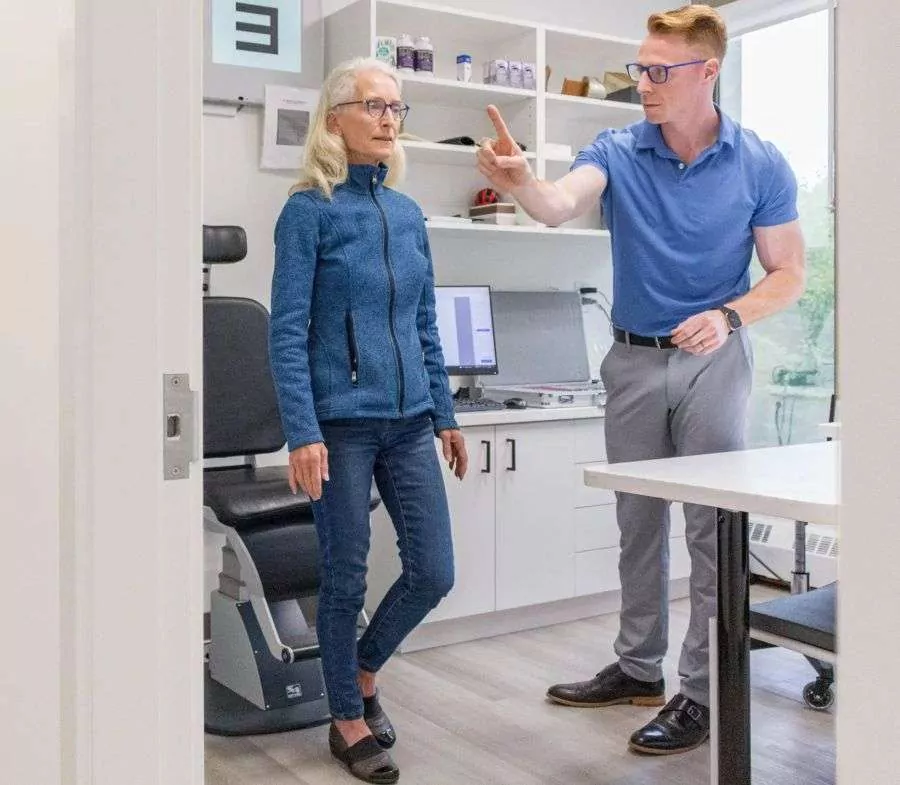Understanding Strabismus (Crossed Eyes)
Types and Causes of Strabismus
Strabismus can be categorized according to the direction in which the eye turns.
- Esotropia: Inward turning
- Exotropia: Outward turning
- Hypertropia: Upward turning
- Hypotropia: Downward turning
Other classifications include frequency (constant or intermittent), involvement of the same eye (unilateral), and alternation between the right and left eye (alternating). The causes of strabismus can range from eye muscle problems and nerve issues to conditions affecting the control center in the brain.
Symptoms of Strabismus Include:
Eyes that appear misaligned
- Eyes that don’t move together
- Frequent blinking or squinting, especially in bright light
- Tilting the head to see objects
- Faulty depth perception
- Double vision
- Slower reading
- Difficulty focusing
- Light sensitivity
Ready to regain a comfortable, aligned vision?
Contact Opto-mization today to schedule your comprehensive strabismus evaluation.
Risk Factors for Developing Strabismus:
- Family history of strabismus
- Significant uncorrected farsightedness (hyperopia)
- Medical conditions like Down Syndrome or cerebral palsy
- Previous stroke or head injury
We offer comprehensive eye exams to diagnose strabismus accurately. Our evaluation includes various tests, such as visual acuity measurement, refraction to determine corrective lens power, and alignment and focusing assessments.
Treatment Options for Strabismus:
- Eyeglasses or contact lenses
- Prism lenses to reduce eye-turning
- Vision therapy to improve eye coordination
- Eye muscle surgery to correct alignment
Our experienced eye doctors will work closely with you to create a personalized treatment plan tailored to your needs. By addressing the underlying causes of strabismus, we aim to enhance eye alignment, visual comfort, and overall quality of life.

Comparing Tennis and Pickleball: Which Sport is Right for You?
The speed and accuracy of your return, or your ability to read the spin of the ball, all depend on how your eyes and brain work together. Pros have known this for years and spend lots of time working on their depth perception and tracking. Vision therapy can take your tennis or pickleball to the next level.
Comparing Tennis and Pickleball: Which Sport is Right for You?
The speed and accuracy of your return, or your ability to read the spin of the ball, all depend on how your eyes and brain work together. Pros have known this for years and spend lots of time working on their depth perception and tracking. Vision therapy can take your tennis or pickleball to the next level.
Golf
Do you put it too short or too long? You’re using your depth perception to gauge how far the hole is and how hard to hit the ball. Many people have to routinely ‘look past the hole’ or aim for the front of the cup in order to be more accurate. This is usually because they are not judging the distance accurately to begin with. Another common pain point in golf is not being able to see your ball after you’ve hit it. Problems with how the eyes track and work together can create problems tracking your golf ball, but fortunately, these are easily remedied.
Reading and Hobbies
Getting tired when you read? Not able to read for as long or as quickly as you used to? It’s common for eye tracking or eye teaming (binocular problems) to cause problems with reading. This can show up as fatigue, falling asleep, headaches, strain, and reduced comprehension. Many people end up slowly avoiding reading, knitting, woodworking, or other hobbies that require sustained focus.
Computer Screens
Computers can be a really helpful tool for emails, research, and all sorts of amazing things. However, problems with how the eyes work together, or how glasses are set up, can create headaches, light sensitivity, difficulty focusing, and more with prolonged screen time.
Related Conditions
If you have been diagnosed with any of the following conditions, it may increase your likelihood of having problems with how your eyes work together:
- Vestibular neuritis
- Meniere’s
- Stroke
- Concussion
- Headaches
Our Approach
We go beyond the routine eye health testing to investigate how your eyes and brain work together. This includes eye tracking, binocular function (eye-teaming), visual-vestibular integration (eye and inner-ear), and more. We have a variety of tools we can use to get the improvement you’re looking for.
Specialized Glasses
We are able to design specialized prescriptions (Ergopathics™) that do more than allow you to see clearly. Ergopathics™ prescriptions can improve how efficiently your eyes and brain work together. This can significantly improve driving, balance, reading, and more.
Vision Therapy (Opto-mization Training)
You may also be a candidate for vision therapy. Our Opto-mization Training Vision Therapy recalibrates how your eyes and brain work together and enhances your performance.
If you’re struggling with driving at night, balance, dizziness, depth perception, reading, or just feel like your vision is affecting your daily life, please book an assessment.